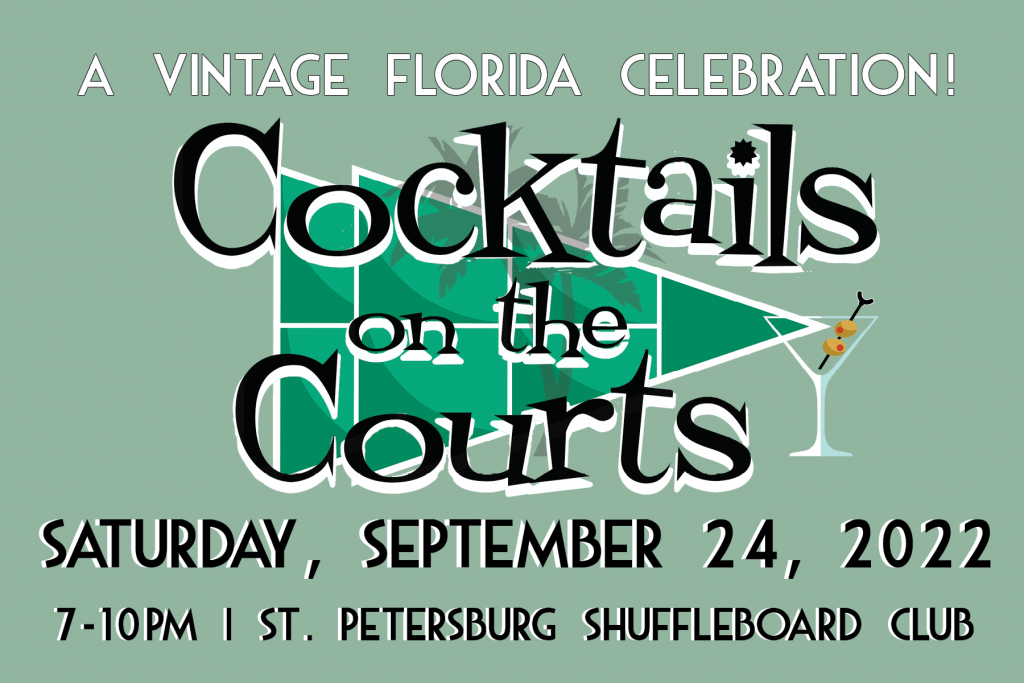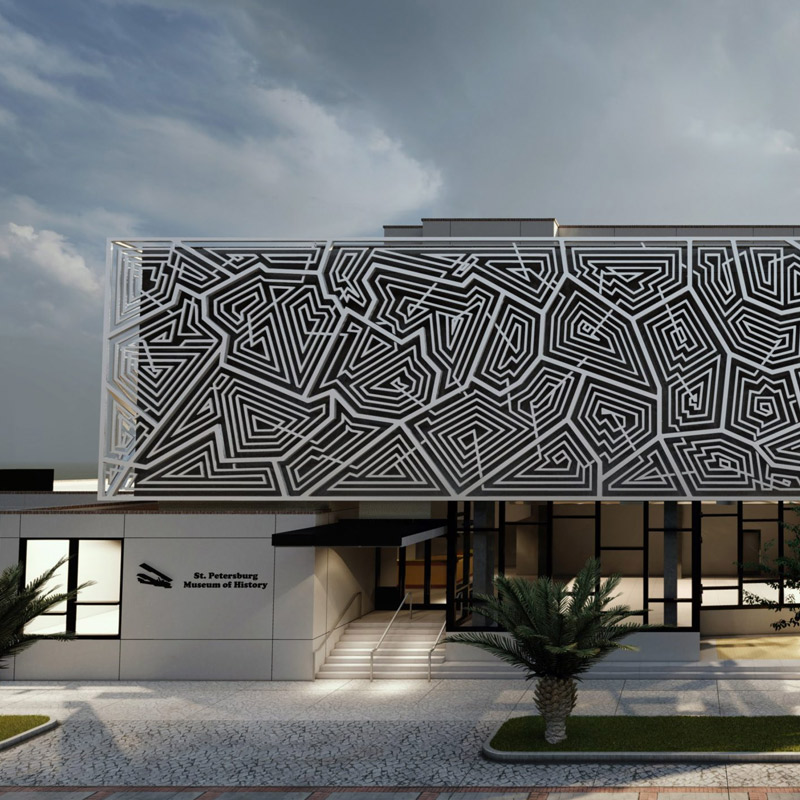Shuffle on Down! The History of Shuffleboard and The St. Petersburg Shuffleboard Club

Popular in England as a tabletop game, shuffleboard has been around since the 15th century. In more modern times, a deck (ground or floor) version of the old indoor game became popular among guests on ocean liners and cruise ships.
By 1913, shuffleboard was being played at Daytona Beach as a land-based game, likely introduced by travelers on those ocean-going ships sailing between England and the United States. The game proved so popular that it spread throughout the United States, particularly in tourist and retirement communities, with each group devising its own rules of play and court sizes.
This haphazard setup led to the creation of shuffleboard regulations and rules in St. Petersburg in 1924. The rules adopted then, and later by the National Shuffleboard Association (founded 1931 in St. Petersburg), defined the size and shape of courts, equipment used, and methods of scoring and playing.
St. Pete’s historic Shuffleboard Club was founded in 1924 on the northeastern shores of Mirror Lake on property given by the city. The club started out with only two courts and a green bench serving as their “clubhouse.”
The sport began spreading around the city. Soon, hotels, apartments, and homes had their own private courts onsite. By the end of World War Two, the St. Petersburg Shuffleboard Club boasted more than 100 clay courts, several clubhouse buildings, and over 8,000 club members.
For nearly a century, the St. Petersburg Shuffleboard Club has hosted thousands of members and served the recreational needs of the Sunshine City’s wintering tourists and residents. Well received by enthusiasts, the first state tournament was held on the grounds in 1928. In addition, the members organized a Festival of States Tournament and participated in the Festival of States Parade.
Considered the World’s Largest Shuffleboard Club, the club has sixty-five masonry courts, four masonry buildings, a steel and concrete grandstand, freestanding frame and metal porches, and hexagon block patios and walkways. Over the years the building complex was enlarged to include the bridge club/dance hall, the grandstands, as well as major additions to the original buildings.
Designated as a historic landmark in 1994, the club today still offers memberships and the ever-popular Friday Night Shuffle, but it also has become a popular venue to rent for weddings, birthdays, corporate gatherings – and of course the St. Petersburg Museum of History’s annual gathering and fundraiser.
Get your tickets today!



